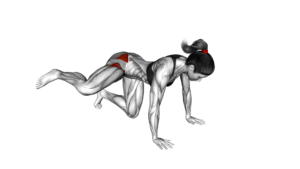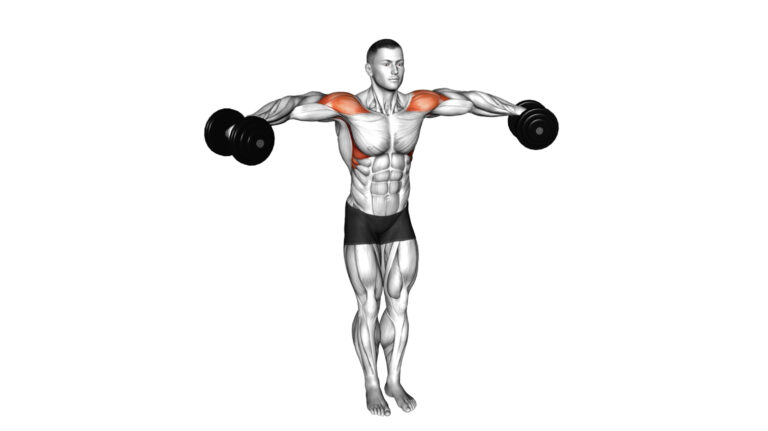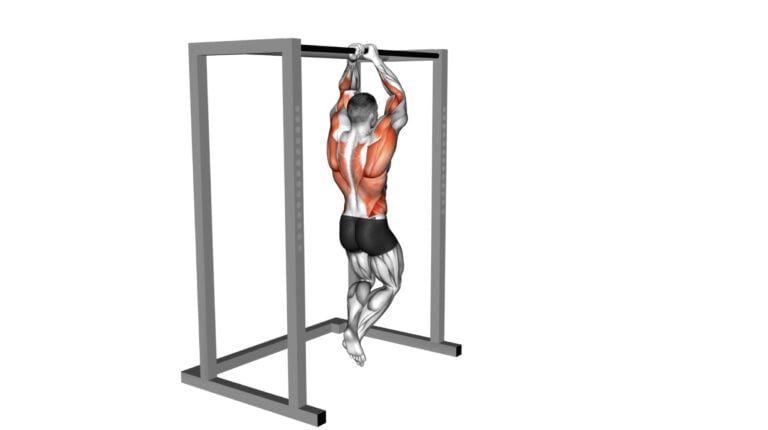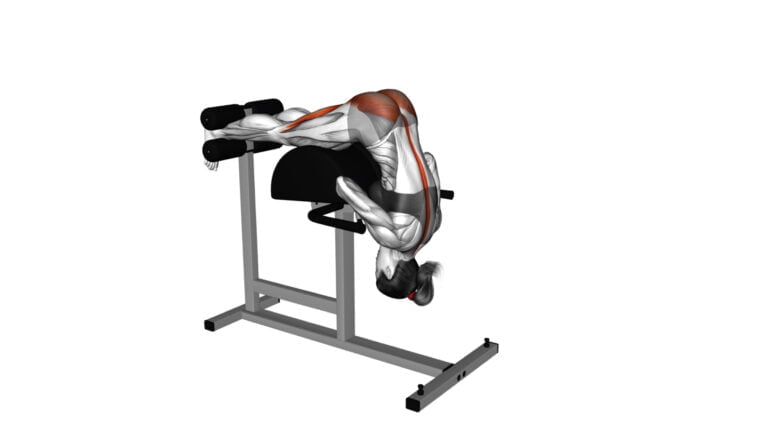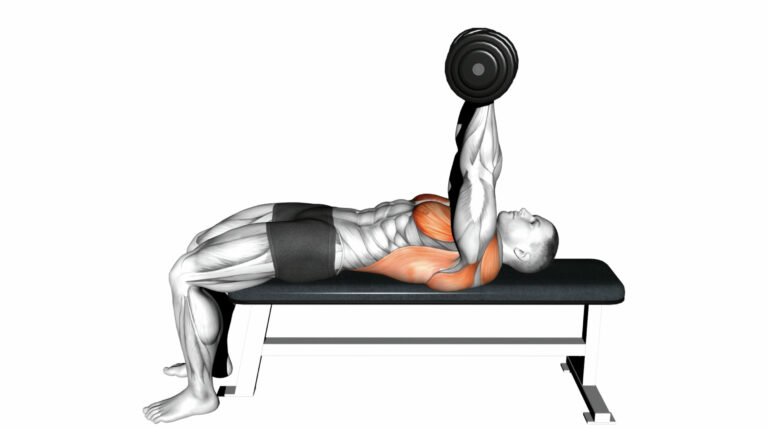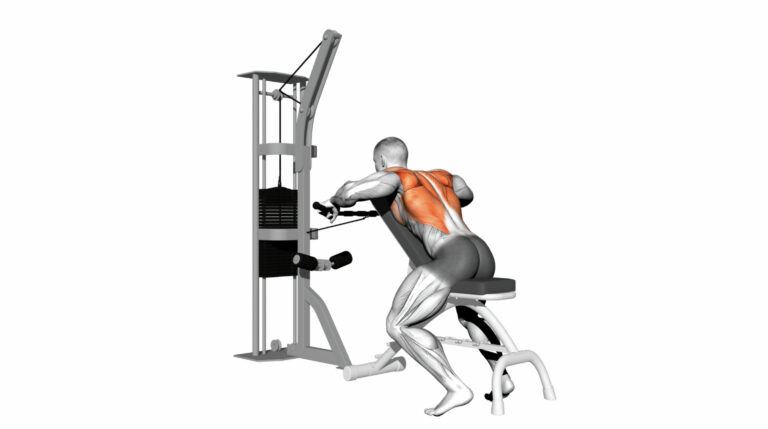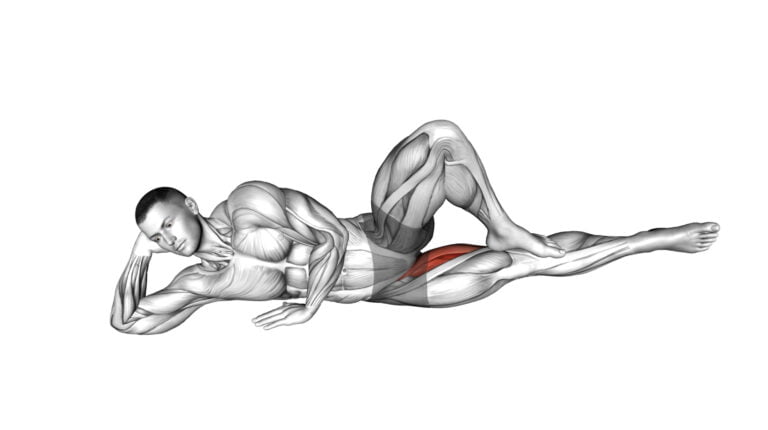How Many Calories Does Plank Exercise Burn?
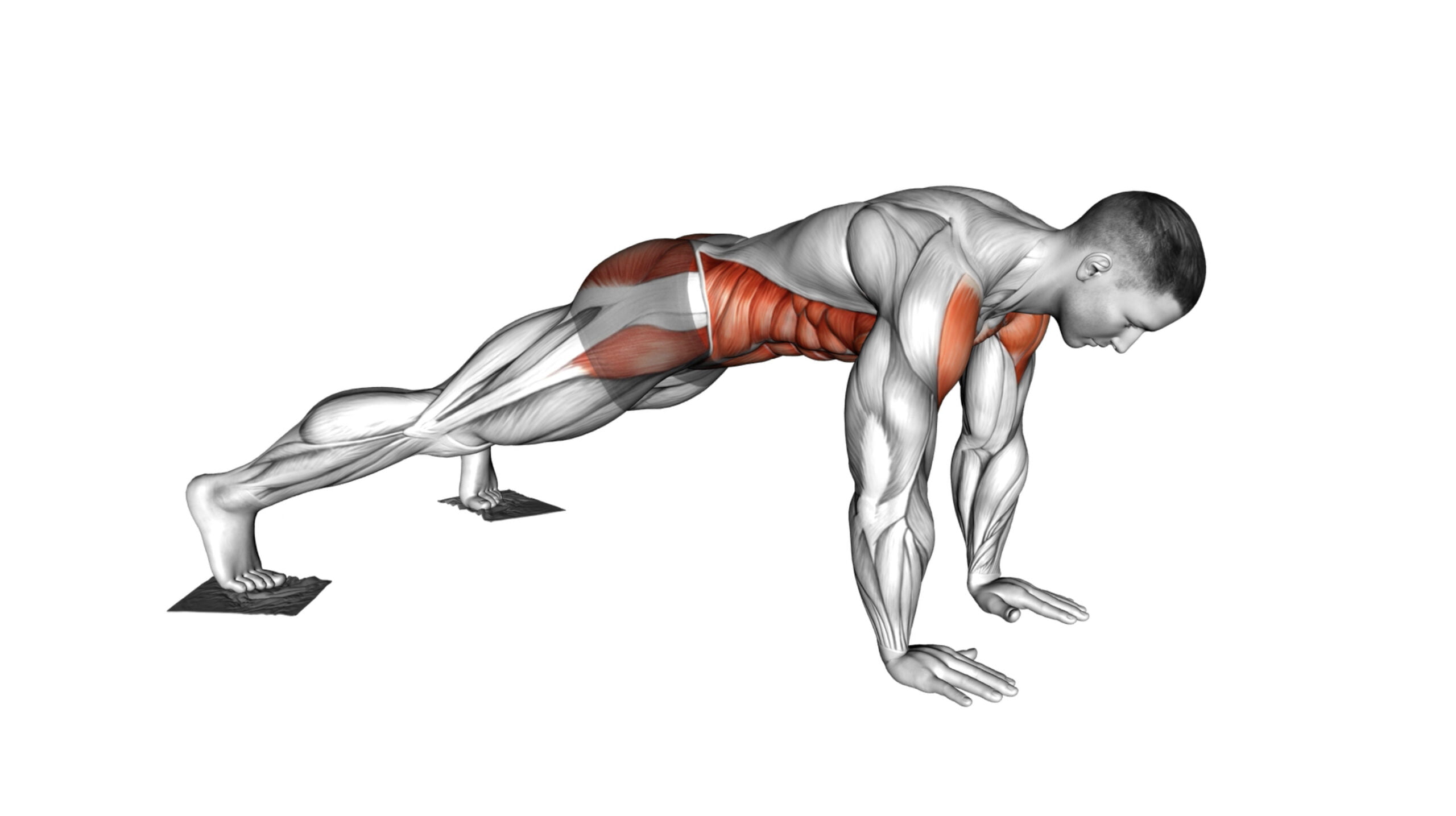
Planking is often seen as a simple, static exercise with limited benefits. However, as a certified personal trainer and health enthusiast with years of experience, I can assure you that this common misconception couldn’t be further from the truth.
Planking engages multiple muscle groups simultaneously, making it an incredibly efficient workout for building core strength and stability.
One burning question many have is: how many calories does plank exercise burn? This article will delve into the fascinating world of planks and their calorie-burning potential. With an emphasis on practicality, we’re set to uncover not just the numbers but also how you can enhance your planking routine for maximum impact.
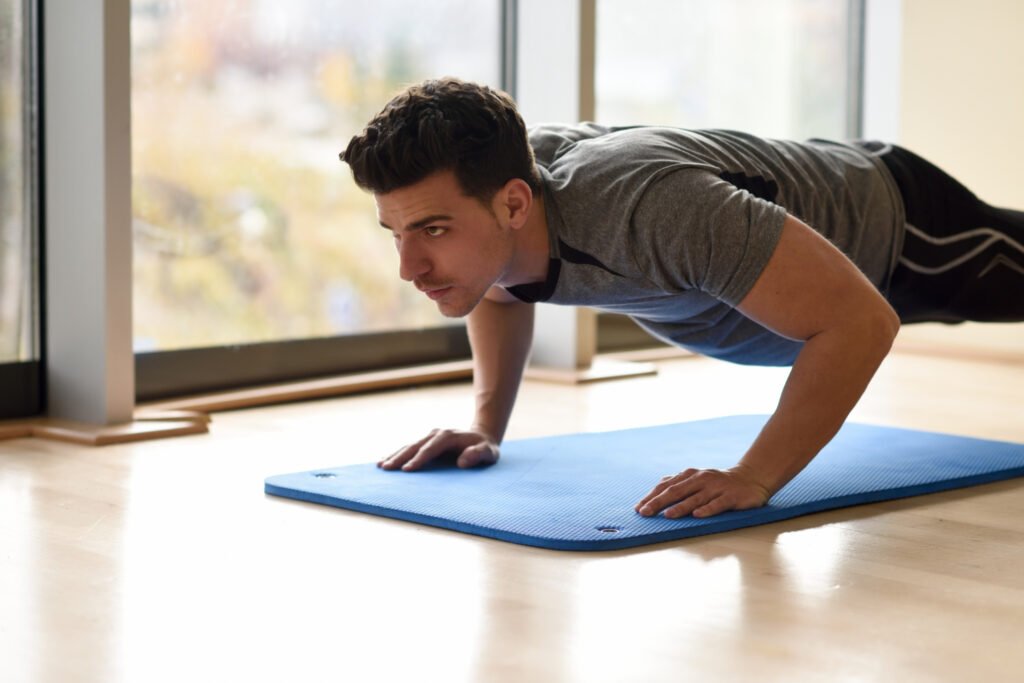
Stay tuned – you might be surprised by what you learn!
Key Takeaways
- Plank exercise burns calories by working multiple muscle groups and increasing heart rate, with the average person burning around 3-4 calories per minute during a plank.
- Factors like body weight, duration of the plank, and intensity impact how many calories you burn, so incorporating challenging variations can boost calorie expenditure.
- To calculate calories burned while planking, multiplying your weight in pounds by 0.0175 can give an estimate of calories burned per minute.
- Including dynamic plank variations such as Side Plank Marches or Elbow-Up and Down Dynamic Planks increases the intensity of workouts, engaging more muscles for higher calorie burn.
- For effective results in strength building and calorie burning from planks, aim for 3 to 5 sets with durations ranging from 20 to 60 seconds per set, adjusting based on fitness level.
Understanding Plank Exercise and Its Benefits
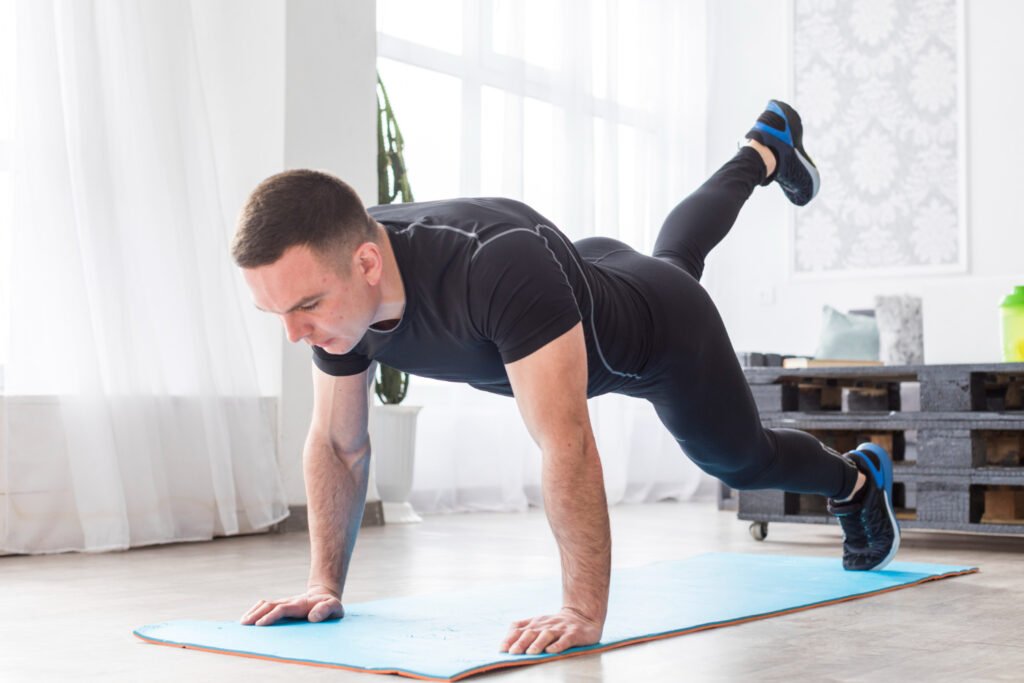
Plank exercise involves holding a position while engaging various muscle groups, such as the transverse abdominis, rectus abdominis, and glutes. It offers numerous health benefits including improved posture, increased shoulder strength, better endurance, reduced risk of injury by strengthening the core muscles.
What is Plank Exercise?
The plank exercise is a powerful form of bodyweight training that targets the core muscles, including the transverse abdominis, rectus abdominis, and the glutes. It involves maintaining a position similar to a push-up for as long as possible.
This static exercise strengthens the abdomen, shoulders, arms, and legs without putting excessive strain on the spine or hip flexors. By engaging in planks regularly, individuals enhance their posture and overall strength.
Executing a plank requires one to lie face down with forearms on the ground and elbows directly beneath the shoulders. Feet should be together while pushing off the floor into a lifted position that forms a straight line from head to heels.
Throughout this isometric exercise, it’s crucial to keep breathing steadily while tightening belly muscles to maximize benefits. Advanced variations challenge stability further by introducing movements like leg raises or arm extensions without compromising form.
Health Benefits of Plank Exercise
Plank exercises engage multiple muscle groups at once, making them an efficient workout for strengthening your core, shoulders, and legs. Engaging your abdominal muscles through planks helps reduce the risk of back pain by improving core strength and stability.
This exercise not only enhances your posture but also boosts shoulder strength without the risk of impingements often associated with heavy lifting.
Incorporating plank variations into your routine can lead to better endurance and flexibility over time. It challenges different parts of your body including biceps, legs, and the transversus abdominis – a deep abdominal muscle that’s crucial for a strong midsection.
Regularly performing planks increases metabolism rate, assisting in weight loss efforts while fortifying the body against injuries. This fat burner offers a low-impact way to support fat loss goals effectively without straining joints or requiring any equipment.
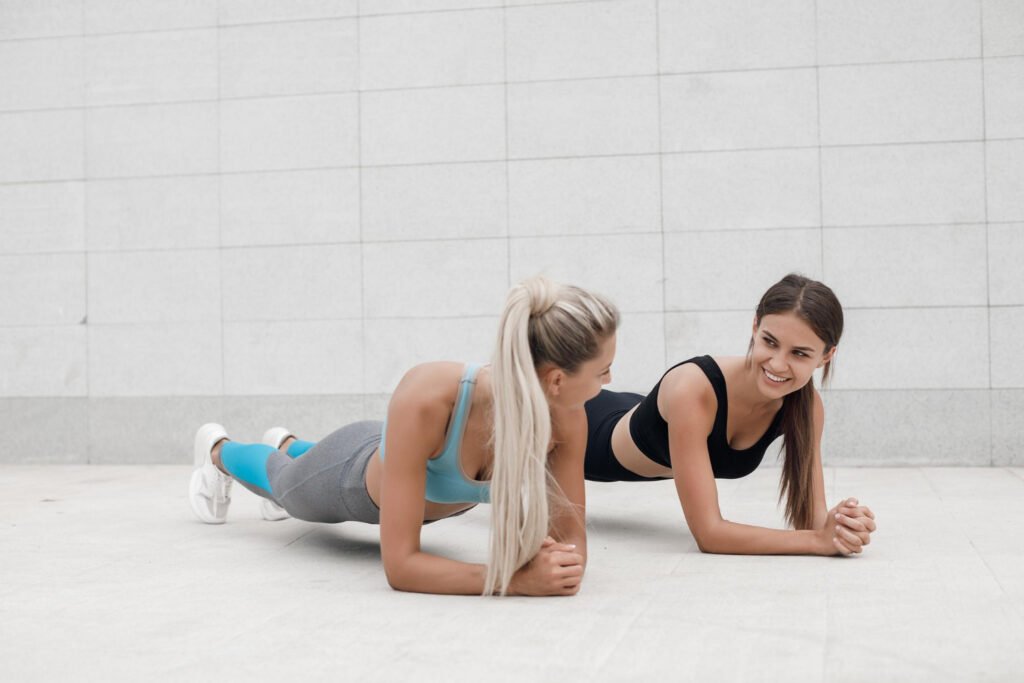
Reducing Risk of Injury
Moving from the overall health benefits of plank exercise, it’s crucial to focus on how this simple yet effective move can play a significant role in reducing the risk of injury. Engaging in regular planks strengthens your core muscles, which serve as the foundation for almost every movement your body makes.
This increased strength not only enhances stability and balance but also supports proper posture during other exercises such as squats, deadlifts, and push-ups. Stronger core muscles mean you’re less likely to incur injuries related to poor form or overexertion.
Moreover, by incorporating planks into your fitness routine, you target shoulder stabilizers and reduce the likelihood of shoulder pain that often accompanies exercises like press-ups or pullups.
The isometric contraction involved in holding a plank forces various muscle groups to work together, promoting muscular harmony and preventing imbalances that could lead to strain or sprain injuries.
By focusing on controlled movements and proper alignment, planks act as a preventive measure against common workout-related injuries.

Improving Posture
To maintain proper form and support the spine while performing plank exercises, improving posture is essential. Engaging the core and stabilizing muscles can help in keeping a straight alignment from head to toe during planks.
Holding this position regularly builds strength in the back, shoulders, and abdomen, which are key elements for maintaining good posture throughout daily activities. The strengthened muscles also prevent slouching by providing better support to the spinal column.
Enhancing shoulder stability through plank exercises contributes significantly to improved posture. Strengthening these muscles aids in avoiding rounded shoulder positioning that often results from poor postural habits or sedentary work environments.
Shoulder Strength
Shoulder strength is a crucial component of plank exercises. Engaging the shoulders helps to stabilize and support the body, leading to improved posture and reduced risk of injury.
Plank variations such as side planks, dynamic planks, and front planks with arm and leg lifts specifically target the shoulder muscles. These exercises not only build strength but also enhance overall upper body stability, which contributes to better endurance during workouts or daily activities.
Developing strong shoulders through plank exercises is beneficial for engaging various muscles in the upper body while promoting proper alignment and reducing strain on other areas such as the lower back.
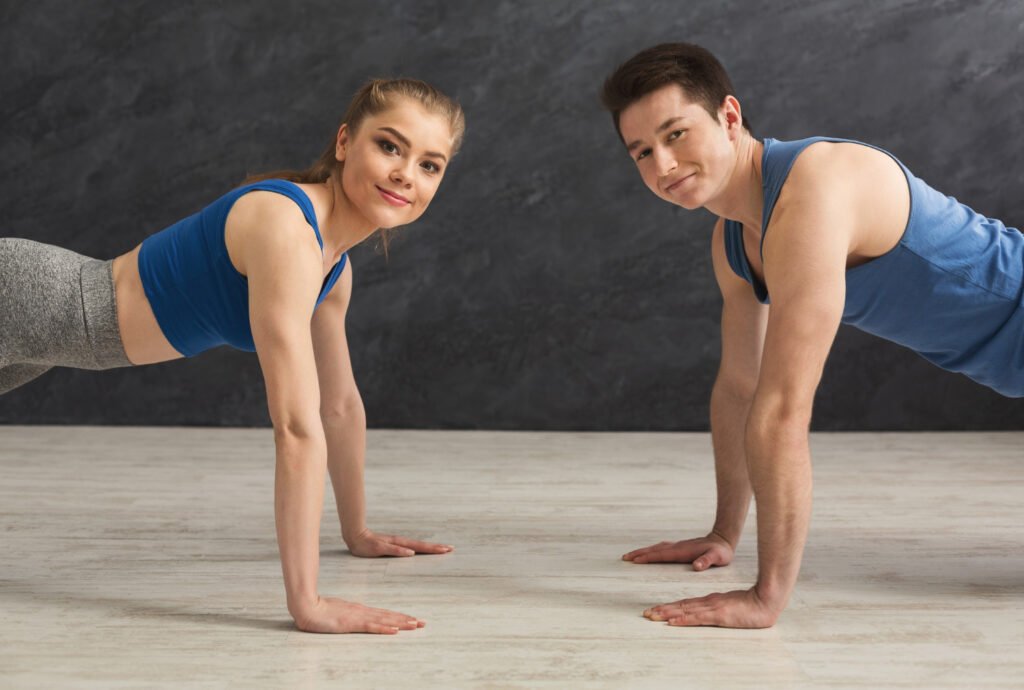
Better Endurance
Improving endurance is a notable benefit of plank exercise. This full-body workout engages multiple muscle groups, enhancing overall stamina. Engaging in regular plank exercises can lead to increased cardiovascular endurance as well, promoting better performance in various physical activities and cardio workouts.
Furthermore, incorporating variations such as side planks or dynamic planks challenges the body further, leading to improved muscular endurance. By gradually increasing reps and holding time, individuals can steadily boost their stamina and fortitude during workouts while also promoting weight loss and overall fitness.
Engaging Various Muscles
To achieve better endurance, it’s crucial to engage various muscles effectively through plank exercises. The plank targets the core muscles, including the rectus abdominis, transverse abdominis, and obliques.
Additionally, it engages the back muscles such as the erector spinae and shoulder stabilizers like the trapezius and rhomboids. The glutes and quadriceps are also activated during a proper plank, making it an excellent full-body workout.
Plank variations further target specific muscle groups; for instance, side planks work the obliques while front planks with leg lifts engage the glutes and hamstrings. Understanding how different types of planks recruit various muscles is essential for effective strength training.
How Many Calories Does Plank Exercise Burn?
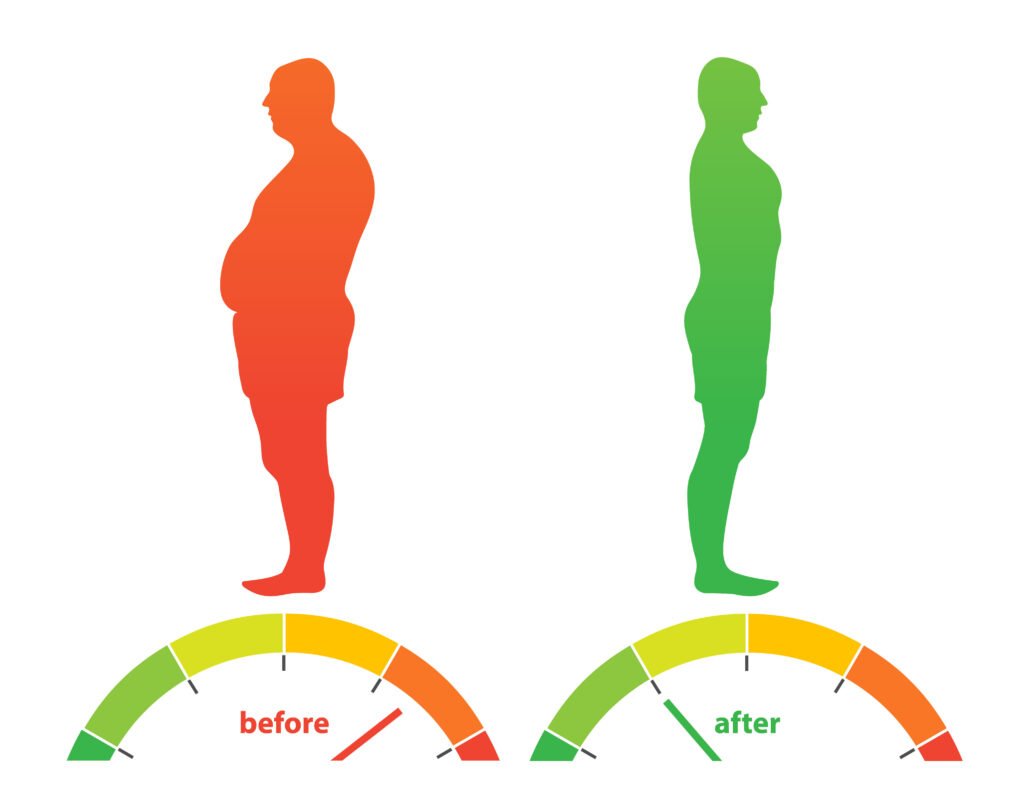
Plank exercise burns calories by engaging multiple muscle groups and increasing heart rate. Different factors such as body weight and intensity determine the number of calories burned during a plank workout.
To learn more about how you can maximize calorie burn with plank exercise, read on to discover effective variations and techniques for a challenging workout session!
Factors that Affect Calories Burned
Several factors influence the number of calories burned during a plank exercise. The main determinants include body weight, duration of the plank, and overall muscle engagement. Additionally, proper form and technique play a crucial role in maximizing calorie expenditure.
Varying the intensity and difficulty level of the plank can also impact the calories burned, making it important to challenge oneself with different variations to achieve optimal results in calorie burning.
The energy expended during a plank is influenced by how much effort is put into stabilizing the core muscles and maintaining balance. Engaging multiple muscle groups simultaneously can further elevate calorie consumption, making it essential to focus on sustaining correct alignment and engaging abdominal muscles for an effective calorie-burning workout.
Average Calories Burned in a Minute
On average, a person can burn around 3-4 calories per minute while holding a plank position. However, the actual number of calories burned depends on several factors such as body weight, muscle mass, and intensity of the exercise.
For an individual weighing 155 pounds, they may burn approximately 3.8 calories per minute during a standard plank. This calorie expenditure increases for those with higher body weights due to greater energy exertion.
Engaging in variations like side planks or dynamic planks can lead to slightly higher calorie burns compared to static planking. Additionally, incorporating movements like leg lifts or arm raises into your planking routine could also elevate calorie burning potential by engaging more muscles and intensifying the workout.
Calculating Plank Exercise Calories
To calculate the calories burned during plank exercise, you can use a simple formula. Multiply your weight in pounds by 0.0175 to find out how many calories you burn per minute of holding a plank.
For instance, if you weigh 150 pounds, you would burn approximately 2.625 calories per minute. You can also estimate the total calories burned by multiplying this number by the duration of your workout.
Another way to calculate plank exercise calories is by using fitness trackers or apps that monitor heart rate and activity levels. These tools can provide a more accurate measurement based on individual factors such as heart rate variability and intensity of the workout.
Plank Variations to Burn More Calories
Fire up your calorie burn with dynamic plank variations designed to challenge and sculpt your entire body. Embrace the Side Plank March, Front Plank Toe Tap, Elbow-Up and Down Dynamic Plank, and more to elevate your workout intensity.
1. Side Plank March
Engage your obliques and improve core strength with the dynamic side plank march. Begin in a side plank position, supporting your body on one forearm and stacking your feet or modifying by placing the upper foot in front for stability.
Raise and lower your hip to tap the ground while maintaining a straight line from head to heels. Keep your core engaged throughout the movement.
By incorporating this exercise into your routine, you can efficiently target and strengthen the muscles along the sides of your torso while also improving balance and stability.
2. Front Plank
Transitioning from the Side Plank March, the Front Plank is another effective variation that engages various muscle groups. To perform a front plank, start by lying face down with your forearms resting on the ground and your elbows directly beneath your shoulders.
Lift your body off the ground, creating a straight line from your head to your heels. Engage your core, glutes, and shoulder muscles to hold this position for as long as possible.
As you maintain proper form during the front plank exercise, focus on breathing evenly and engaging all targeted muscles. Keep in mind that consistency is key when it comes to reaping maximum benefits from this particular exercise.
3. Front Plank Toe Tap
Engage your core and stabilize your body in a front plank position. Maintain the plank posture while gently tapping one foot out to the side, then returning it to its original position.
Alternate tapping each foot for an effective workout that targets the abdominal muscles, obliques, and lower back. This dynamic movement challenges your stability and coordination while adding intensity to your standard front plank exercise.
Ready to level up? Let’s continue with “4. Elbow-Up and Down Dynamic Plank” for another challenging variation of the classic plank exercise routine.
4. Elbow-Up and Down Dynamic Plank
Transitioning from the Front Plank Toe Tap to the Elbow-Up and Down Dynamic Plank, this variation adds an extra challenge by incorporating a dynamic movement. Begin in a plank position on your forearms, then push up onto your hands one at a time, and return back down to the starting position while engaging your core muscles throughout.
This movement helps to target not only the core but also the shoulders and chest, making it a full-body exercise that can help improve overall strength.
Engaging in Elbow-Up and Down Dynamic Planks regularly can contribute to building upper body strength as well as improving stability and endurance. By adding this variation to your workout routine, you’ll increase the intensity of your planks, potentially leading to greater muscle engagement and calorie burn compared to static plank holds.
5. Front Plank with Arm and Leg Lift (push-up position)
Lift one arm and the opposite leg while holding a front plank to engage core muscles intensely. This move challenges balance, stability, and overall body strength.
Shift your weight onto one hand and the opposite foot for an added challenge. Maintain a straight line from head to heel throughout the exercise. Engage your abs and glutes to keep your body stable as you lift your limbs off the ground.
6. Kneeling plank
Engage your core and lower body with the kneeling plank variation. Begin in a plank position, but with your knees on the ground instead of straight legs. Keep your back straight and hold this position for 30 seconds to a minute.
This variation targets the abs and reduces strain on the lower back, making it suitable for beginners or those recovering from an injury.
For more challenge, lift one knee off the ground at a time while maintaining a stable plank position. To maximize calorie burn, incorporate this variation into your routine alongside other plank exercises.
7. Front Plank to Toe Tap
Transitioning from the kneeling plank to the front plank to toe tap introduces a dynamic variation that engages your core and enhances stability. To perform this exercise, begin in a traditional front plank position with your forearms on the ground and body aligned in a straight line.
Then, while maintaining proper form, lift one foot off the ground and tap it lightly out to the side before returning it to its starting position. Repeat this movement with the other foot.
This challenging combination strengthens not only your core but also targets your hip flexors and obliques.
8. Plank Jack
To perform a plank jack, start in a high plank position with your hands directly under your shoulders and your body forming a straight line from head to heels. Now, jump both feet out wide like you would for a jumping jack, then jump them back together.
Keep your core engaged throughout the movement to stabilize your body. This dynamic exercise boosts heart rate, engages the core muscles more intensively, and also works the legs and arms.
Engage multiple muscle groups simultaneously by incorporating plank jacks into your workout routine. It’s an effective way to challenge coordination while improving cardiovascular endurance.
Additionally, it can contribute to burning calories and increasing overall strength.
9. Elbow to Knee Side Plank Crunch
Transitioning from the dynamic Plank Jack to the Elbow to Knee Side Plank Crunch, this variation intensifies the standard side plank by incorporating a crunching motion. To perform, start in a side plank position with your elbow directly beneath your shoulder and feet stacked.
As you exhale, bring your top knee towards your elbow while lowering your bottom hip toward the floor. Return to starting position and repeat.
Engage multiple muscle groups simultaneously including obliques, shoulders, and hips for an efficient calorie-burning exercise. This dynamic movement boosts core strength as well as stability, making it an effective addition to any workout routine focused on weight loss or strength training.
10. Plank Jack Slide with Towel
Engage your core by starting in a plank position with a towel under your feet. Slide your feet out to the side, then back to center, keeping your abs tight and body in a straight line.
This dynamic movement elevates the calorie burn of the traditional plank exercise while also targeting your inner and outer thighs.
Challenge yourself further by increasing the speed of the sliding motion or incorporating it into a high-intensity interval training (HIIT) routine for an effective full-body workout that promotes weight loss and boosts overall strength.
Recommended Sets And Reps
To maximize the benefits from plank exercises, it is essential to perform them with proper sets and repetitions. Aim for 3 to 5 sets of each plank exercise, with a range of 20 to 60 seconds per set.
For beginners, start with shorter durations and gradually increase the time as your strength improves. It’s crucial to maintain correct form throughout each set to effectively engage all targeted muscles.
Incorporate variety by mixing different types of planks and adjusting the duration of each set based on your fitness level and goals. By consistently challenging yourself with adequate sets and reps, you can enhance core strength, stability, and overall endurance while shedding calories.
Conclusion
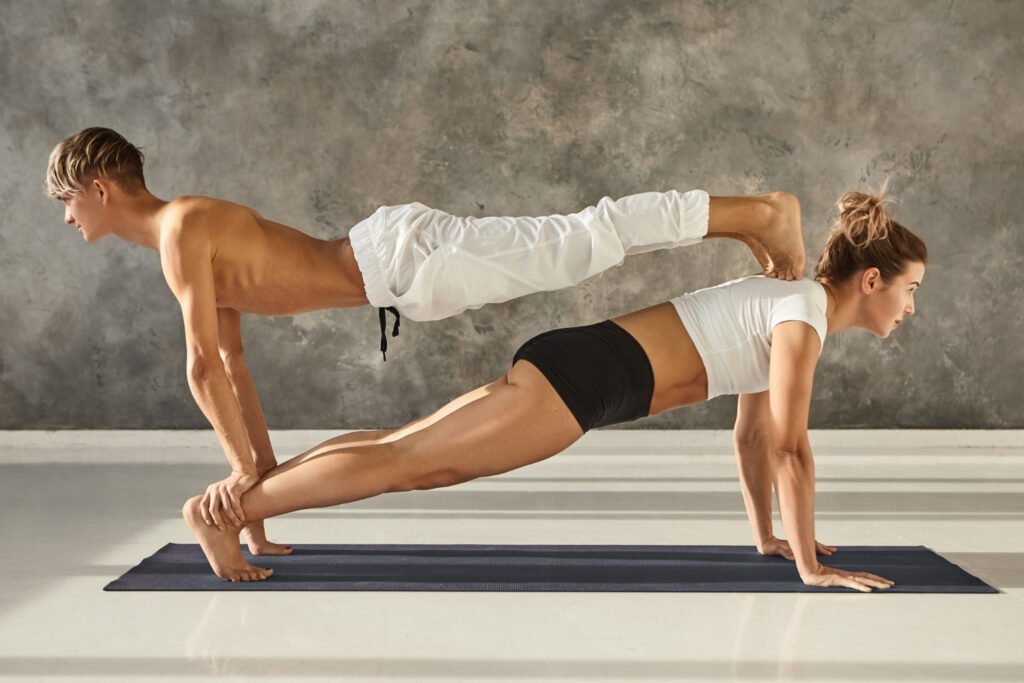
To maximize the calorie burn, incorporate these plank variations into your routine. These exercises target various muscle groups and boost overall effectiveness. By alternating between different plank variations, you can maintain high-intensity workouts and maximize calorie expenditure over time.
With consistent practice and dedication, you can achieve meaningful progress in your fitness journey. Remember that each variation offers its unique set of benefits while contributing to a more comprehensive workout routine.
Make sure to challenge yourself with these plank variations for enhanced results in your fitness regimen.
FAQs
1. How does plank exercise help in weight loss?
Plank exercises strengthen your core and increase your metabolism, aiding you in burning more calories even when you’re not working out. They are an effective strength exercise that supports weight-loss goals.
2. Can doing planks burn as many calories as cardio exercises?
While planks may not burn as many calories as high-intensity cardio exercises like running or cycling, they are crucial for building muscle strength. More muscle means a higher resting metabolic rate, which can contribute significantly to losing weight over time.
3. Is it better to do plank exercises or sit-ups for losing belly fat?
Both plank exercises and sit-ups can help tone your abdominal muscles, but planks offer a more comprehensive workout by engaging multiple muscle groups simultaneously without straining your back like crunches or sit-ups might.
4. How often should I include planks in my exercise routine to see results?
Incorporating plank exercises into your daily fitness routine can enhance muscular endurance and support weight-loss efforts. Consistency is key; aim to hold the plank position longer each time to challenge yourself and build core strength effectively.

Author
Years ago, the spark of my life’s passion ignited in my mind the moment I stepped into the local gym for the first time. The inaugural bead of perspiration, the initial endeavor, the very first surge of endorphins, and a sense of pride that washed over me post-workout marked the beginning of my deep-seated interest in strength sports, fitness, and sports nutrition. This very curiosity blossomed rapidly into a profound fascination, propelling me to earn a Master’s degree in Physical Education from the Academy of Physical Education in Krakow, followed by a Sports Manager diploma from the Jagiellonian University. My journey of growth led me to gain more specialized qualifications, such as being a certified personal trainer with a focus on sports dietetics, a lifeguard, and an instructor for wellness and corrective gymnastics. Theoretical knowledge paired seamlessly with practical experience, reinforcing my belief that the transformation of individuals under my guidance was also a reflection of my personal growth. This belief holds true even today. Each day, I strive to push the boundaries and explore new realms. These realms gently elevate me to greater heights. The unique combination of passion for my field and the continuous quest for growth fuels my drive to break new ground.







